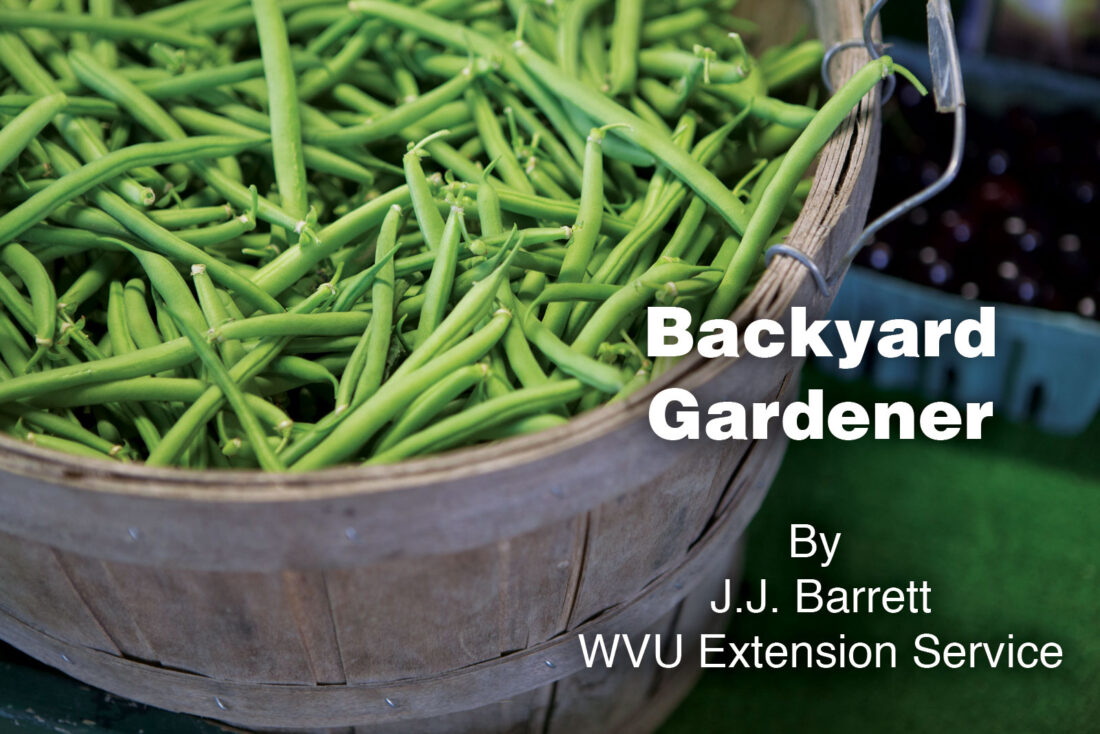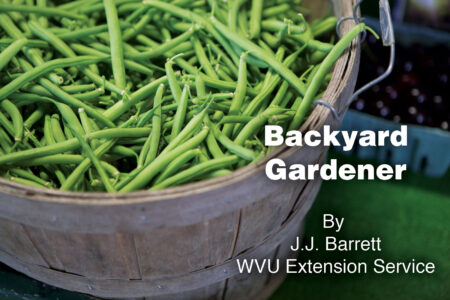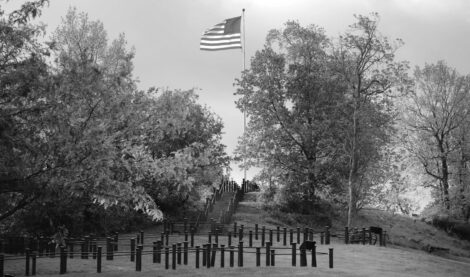Backyard Gardener: Canning and freezing green beans

(Photo Illustration - Backyard Gardener - MetroCreativeConnection - JJ Barrett)
Hello Mid-Ohio Valley Farmers and Gardeners! A week of sunshine is truly a blessing as the month of July winds down.
Wood County 4H and FFA marked the end of their annual Summer Showcase with the Junior Livestock Sale last Saturday at noon at the Wood County 4H Camp. It was a smashing success and congratulations to all of our Wood County youth who exhibited 4H and FFA projects at the Summer Showcase. Well done.
This week I want to discuss preserving green beans. First, a word on production issues we are experiencing this summer in the Valley.
Poor blossom and fruit sets in vegetable crops (especially green beans, peppers and tomatoes) can be caused by prolonged dry or wet soil conditions, very high or very low temperatures, excessive shade, excessive nitrogen fertilization and hot, dry winds. Also, failure to harvest crops regularly can signal plants to decrease flower and fruit production.
Night temperatures below 60 degrees Fahrenheit and above 75 degrees Fahrenheit, or daytime temperatures above 95 degrees Fahrenheit, can cause flowers and small fruits to drop off. Many of these temperature swings have occurred this growing season here in the Valley.
Plants often stop producing blossoms and fruits during mid-summer if temperatures are high. Fruit production then resumes on healthy plants in late summer and early fall. Many vegetable plants flowering and fruit production diminishes when temperatures are below 55 or above 95 degrees Fahrenheit.
Green beans are a staple food here in the Valley. Nothing beats that true green bean flavor in our Mountaineer half runners. Beans also add nitrogen to the soil and usually produce a heavy crop for canning and freezing for the winter.
We have experienced several calls to the extension office about canning green beans. Green beans from the garden are safe, nutritious and delicious if processed properly using the correct equipment and following recommended researched procedures.
All fresh vegetables, except for most tomatoes, are low-acid foods. Low-acid foods have pH values higher than 4.6. The only safe method of home canning low-acid foods, including green beans, is to use a steam pressure canner. Do not use a hot water bath (boiling water canner) to can green beans. You must use a pressure canner.
Pressure canning achieves a temperature of 240 degrees Fahrenheit, much higher temperature than the 212 degrees Fahrenheit of boiling water. A pressure of 11 pounds at 0 to 1,000 feet of altitude is required to produce the high temperature that kills the botulism-causing bacterium, botulinum.
Botulism food poisoning is rare but deadly. Bacteria which cause botulism are found in the soil and can grow in anaerobic (without oxygen) conditions, such as in canned low-acid foods. If not canned correctly the bacterial spores can survive. Spores can become active in low-acid food stored in airtight containers and produce the deadly toxin that causes botulism.
Choose freshly harvested green beans with young tender pods. Pod diameter, not length, is the best indicator of quality. Freshness is evidenced by a distinct, audible snap when the bean is broken. Beans that are over-matured will be tough and stringy. Immature beans will wilt and soften quickly after harvesting. Wash beans in cold water. Beans can be cut into one to four-inch lengths or left whole.
Green beans meant for canning do not need to be blanched. An average of two pounds of beans is needed per quart jar or one pound of beans for a pint jar. For raw packing fill pint or quart jars tightly with beans leaving 1 inch of headspace. Add boiling water over the beans, again leaving a one-inch headspace. Attach two-piece metal lids.
For hot packing, beans can be boiled for 5 minutes in a pan and then packed hot with the boiling liquid into pint or quart jars. Leave 1-inch headspace and attach two-piece metal lids.
For either method you may add canning or pickling salt at 1/2 teaspoon per pint or 1 teaspoon per quart. To process in a pressure canner, place the jar rack, 2 inches of water, and the sealed jars in the canner. Fasten the lid and heat the canner on high. After exhausting the steam for 10 minutes, add the weighted gauge or close the petcock to 3 pressurize the canner. Start timing when the desired pressure is reached.
In the Valley we are below 2000 feet in elevation, so pressure canners should be set at 11 pounds. Quarts need to be processed for 25 minutes and pints for 20 minutes.
When the processing time has completed, remove the canner from the heat. Air-cool the canner until it is fully depressurized. Then slowly remove the weighted gauge or open the petcock, wait 2 minutes, and unfasten and carefully remove the canner lid. Remove the jars from the canner with a jar lifter and place the jars on a towel or rack.
Do not retighten the screw bands. Air-cool the jars 12 to 24 hours. Remove the screw bands and check the lid seals. If the center of the jar lid is indented, wash, dry, label and store the jar in a clean, cool, dark place
Freezing is also a great choice for preserving green beans. Green beans must be blanched before they can be frozen. Blanching stops enzyme actions that can cause loss of flavor, color and texture. Blanching works best if you heat one gallon of water to boiling in a large pot fitted with a wire basket, colander, or similar container.
Add no more than 1 pound of green beans (4-6 cups) to the boiling water. Once the water returns to a boil, blanch beans for 3 minutes then remove the beans using the basket and plunge them into cold water.
Fill pint or quart-size freezer bags close to full, squeezing out the excess air. You can also pack rigid freezer containers tight, leaving a 1/2 to 1-inch headspace. Seal, label and freeze these containers.
More information on preserving green beans and other fruits and vegetables can be found at the National Center for Home Food Preservation website at: nchfp.uga.edu. Contact me with questions at the WVU Extension Office at 304 424 1960 or at jj.barrett@mail.wvu.edu. Good Luck and until next time, Happy Gardening!






